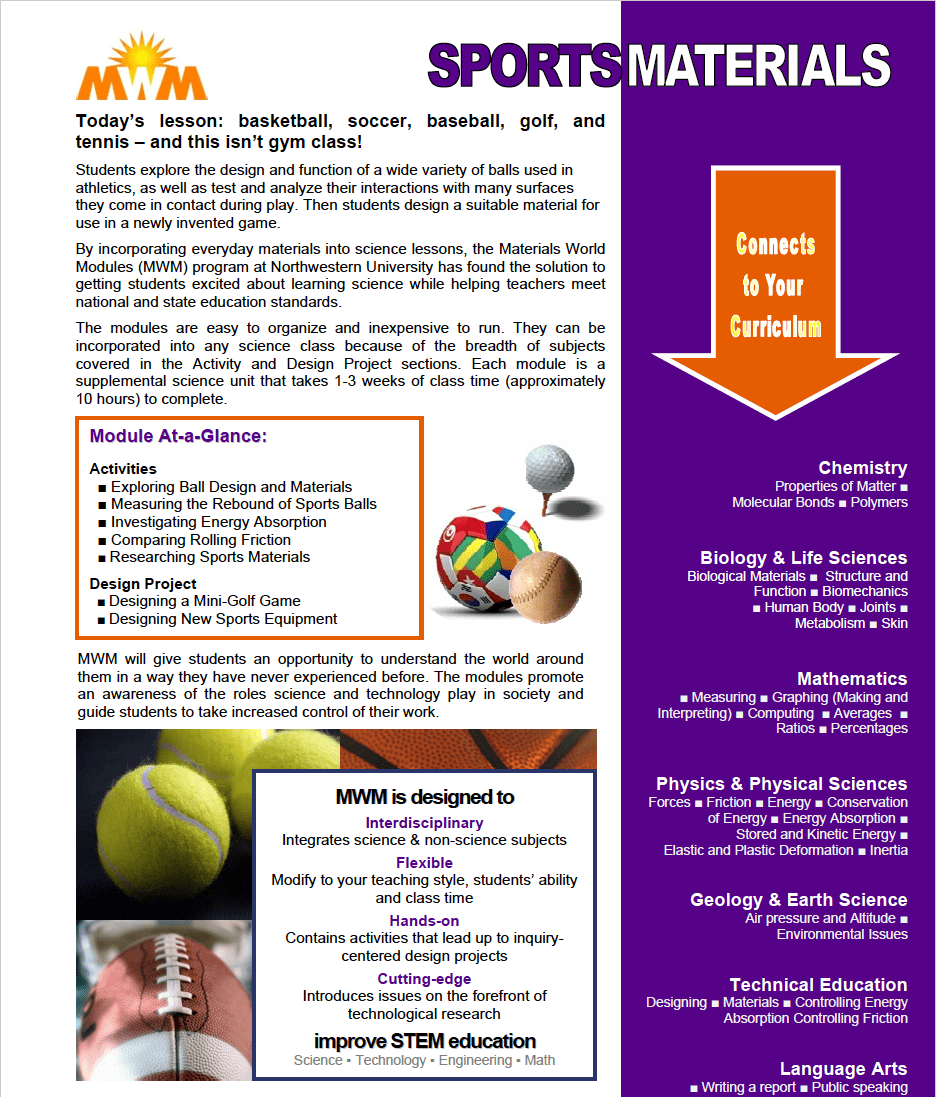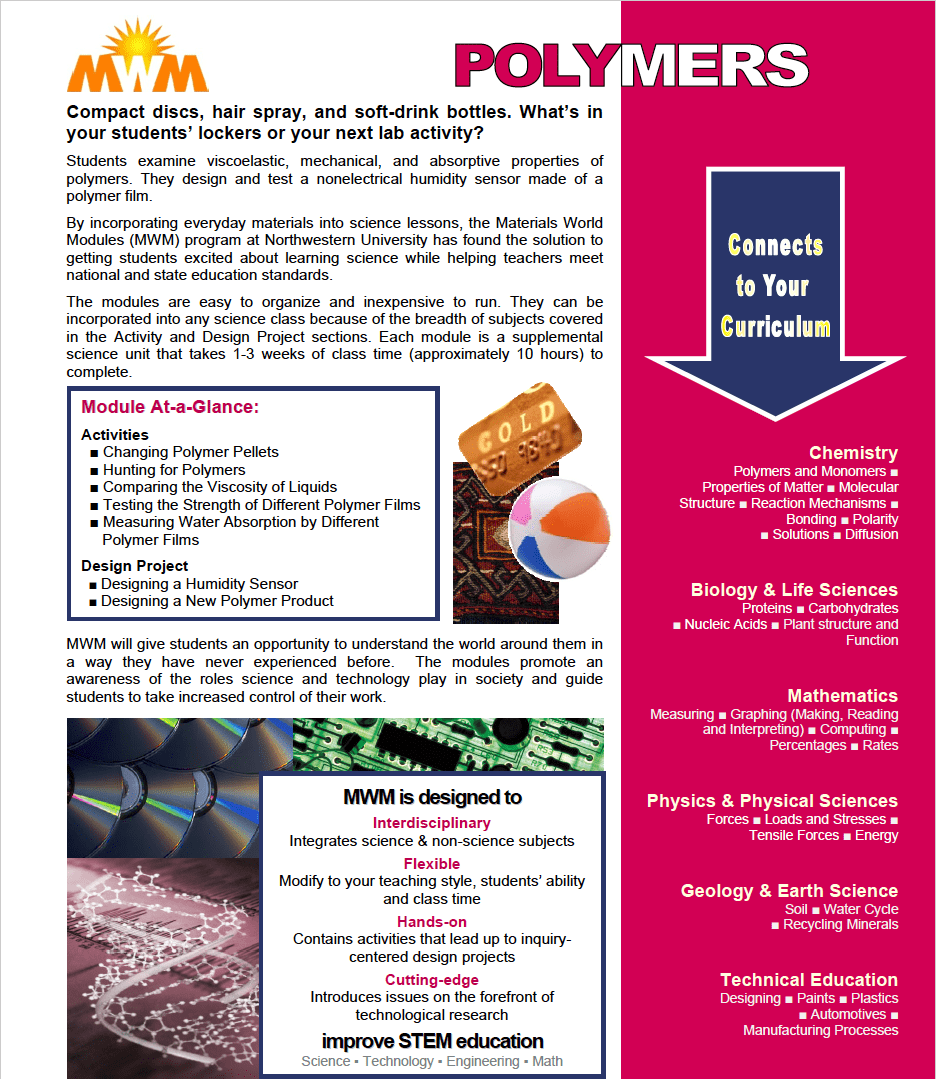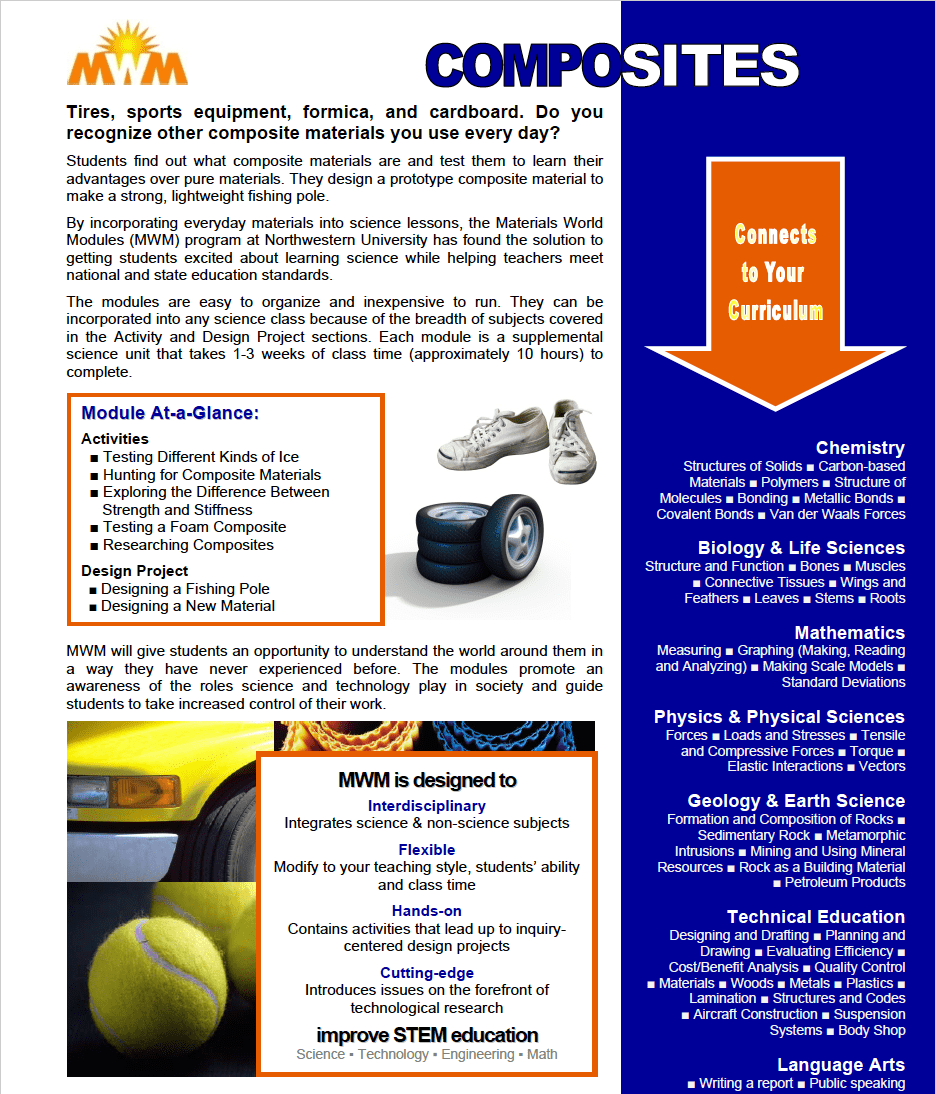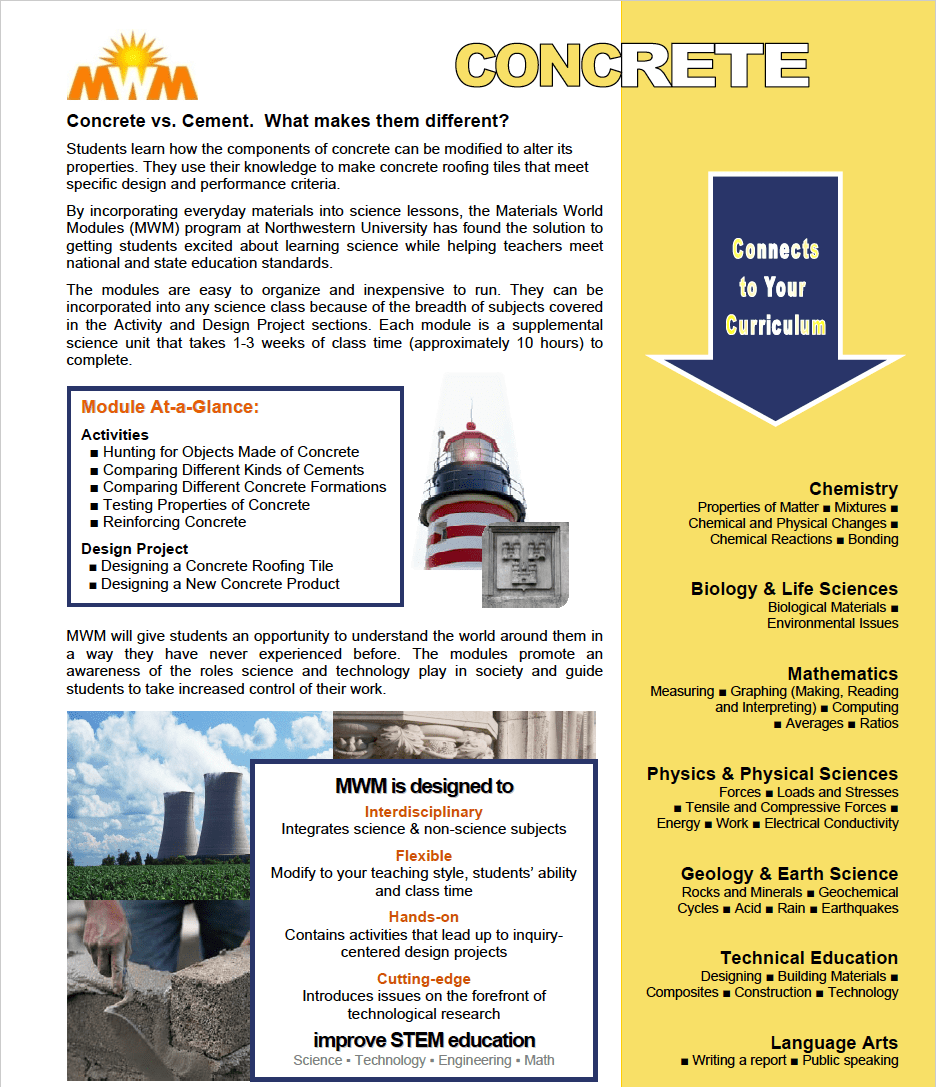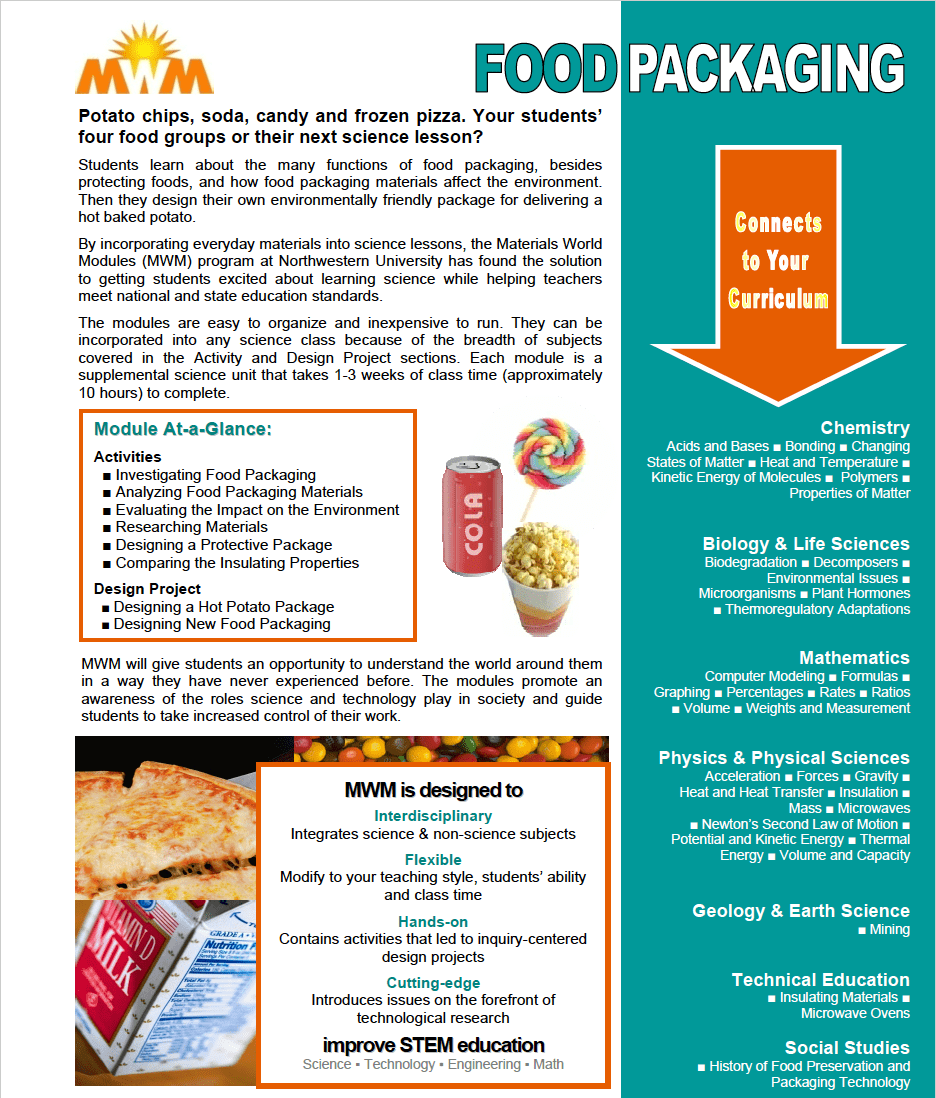Featured Module |
Other MWM Modules
|
Sports Materials Module
Polymers Module
Smart Sensors Module
|
Students study the features and applications of smart sensors in this module. Students begin by experimenting with a commercial piezoelectric motion detector and then they explore other kinds of sensors (their inputs, outputs, composition, and potential applications). The next lesson and activity engage them in making a piezoelectric microphone. This activity is followed by examining the piezo effect and the peizoelectric and pyroelectric responses of the polymer polyvinylidene fluoride (PVDF) film. The design problems involve developing a device that will count coins and inventing a new kind of sensor. The science content examines the sensitivity of materials to infrared radiation, plants that sense stimulus, the human ear as a natural sensor, the chemical structure of a piezoelectric material, and how PVDF works. The technology content looks at human-made sensors (piezoelectric sensors), practical applications for sensors, and the role of sensors in technological systems. |
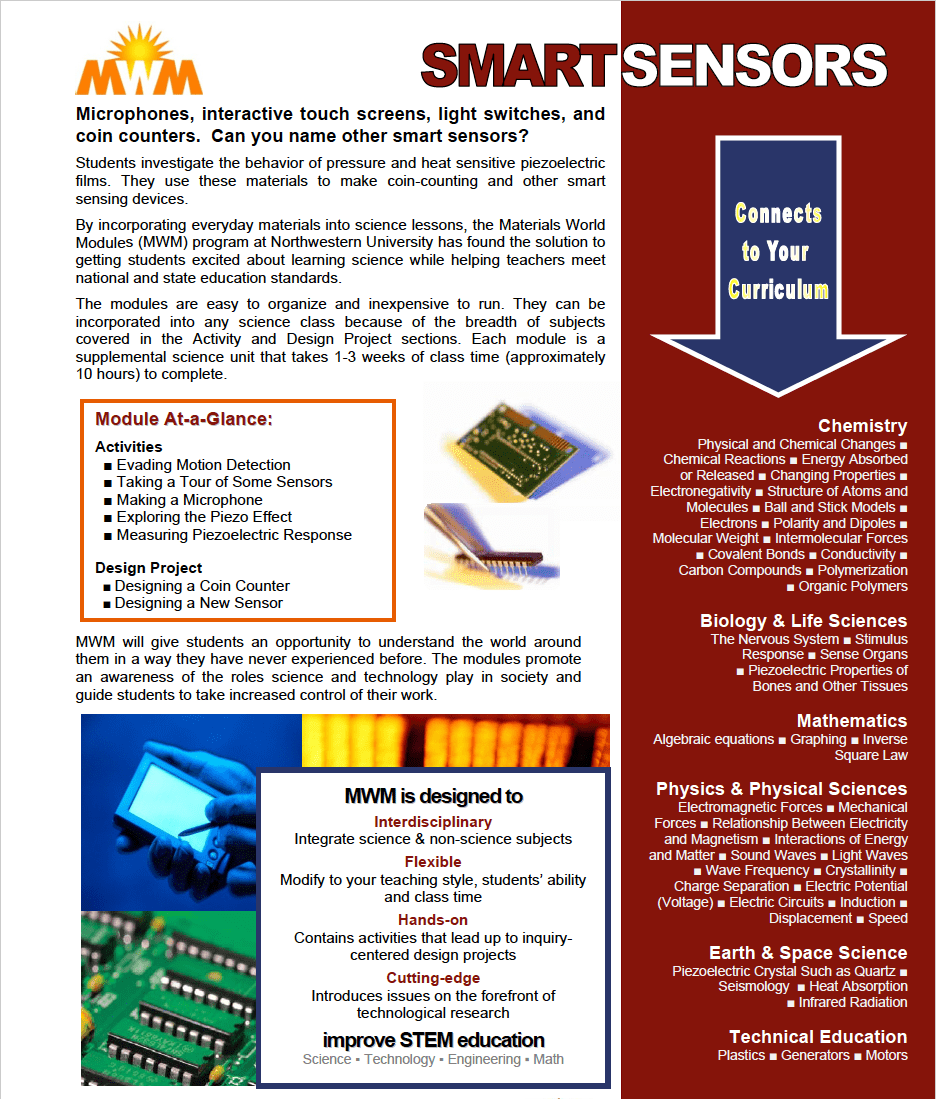
Additional Resources: |

